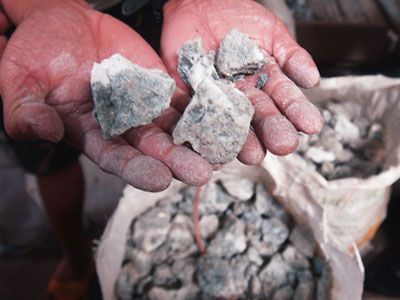Whoever coined the phrase "hard as a rock" might very well have been thinking of granite. Formed over millions of years from compressed molten rock under the Earth's surface, granite is extremely hard and durable.
Advertisement
With its heat-resistant qualities, granite doesn't blister; it's also unlikely to scratch or chip. When used for kitchen countertops, it's far superior to marble, synthetic and laminate. It's also better looking and has a luminous, dimensional quality when polished.
Granite is made up of interlocking mineral crystals, the most common being feldspar and quartz. But an array of other minerals can be included, and these make each piece of granite unique. Feldspar will give gray, pink or red highlights; the light gray veins are quartz; and the black is typically mica [source: Geology].
Granite is drilled, chiseled and blasted out of quarries in large blocks, and special milling machines then cut it into workable slabs. Typically, a slab of granite is around 4 to 5 feet (1.2 to 1.5 meters) wide and between 7 to 9 feet (2.1 to 2.7 meters) long. Other machines polish the material into a uniform thickness, usually about three-quarters of an inch to 1 1/4 inches (2 to 3 centimeters) [source: Walton].
Turning raw granite into countertops requires special tools. Granite can be custom-made and professionally installed, but it's also available in precut and edged countertops. The kitchen's design, the shapes and sizes of the available precut material and the location of the seams will help determine if you can use precut and edged granite or if you need a custom installation.
Are you convinced that granite is the best choice for your kitchen or bathroom remodeling project? Read on to learn how to cut granite countertops.
Advertisement


